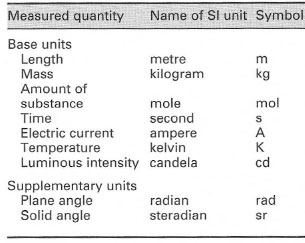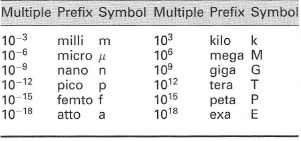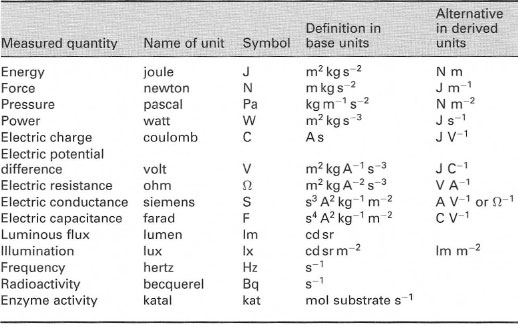SI units and their use
When describing a measurement, you normally state both a number and a
unit (e.g. 'the length is 1.85 metres'). The number expresses the ratio of
the measured quantity to a fixed standard, while the unit identifies that
standard measure or dimension. Clearly, a single unified system of units is
essential for efficient communication of such data within the scientific
community. The Systeme International d'Unites (SI) is the internationally
ratified form of the metre-kilogram-second system of measurement and
represents the accepted scientific convention for measurements of physical
quantities.
Another
important reason for adopting consistent units is to simplify
complex calculations where you may be dealing with several measured
quantities. Although the rules of the SI are complex and the scale
of the base units is sometimes inconvenient, to gain the full benefits of the
system you should observe its conventions strictly.
The description of measurements in SI involves:
- seven base units and two supplementary units, each having a specified
abbreviation or symbol (Table 9.1);
- derived units, obtained from combinations of base and supplementary
units, which may also be given special symbols (Table 9.2);
- a set of prefixes to denote multiplication factors of 103, used for
convenience to express multiples or fractions of units (Table 9.3).
 |
| Table 9. 1 The base and supplementary SI units |
|
|

| |
| Table 9.3 Prefixes used in the SI |
|
 |
| Table 9.2 Some important derived SI units |







